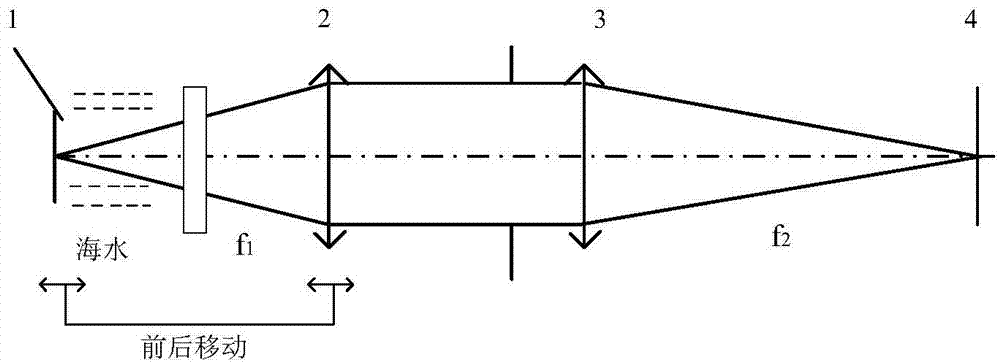Wake flow bubble detection optical system
An optical system and bubble technology, applied in optics, optical components, photogrammetry/video measurement, etc., can solve problems such as high telephoto capability, high CCD resolution requirements, interference, strong light absorption and scattering effects, etc.
- Summary
- Abstract
- Description
- Claims
- Application Information
AI Technical Summary
Problems solved by technology
Method used
Image
Examples
Embodiment Construction
[0019] The present invention proposes a wake bubble detection optical system, the optical principle is as follows figure 1 shown. Including sheet light source 1, front group lens 2, rear group lens 3, rear group lens 3 connection switching mechanism, sheet light source 1 and front group lens 2 are located in the same optical path, rear group lens 3 is multiple groups, and multiple groups of rear group lenses pass through The switching mechanism performs switching, so that a group of rear group lenses 3 and the front group of lenses 2 are correspondingly located on the same optical path. In the present invention, the rear group lens 3 is three groups. Three groups of rear group lenses 3 comprise positive lens and negative lens respectively, and the sum of positive lens and negative lens is at least four. The sheet light source 1 and the front group lens 2 are fixed on the same platform and move synchronously. There is also a switching mechanism between the lens groups. In ord...
PUM
| Property | Measurement | Unit |
|---|---|---|
| Focal length | aaaaa | aaaaa |
| Thickness | aaaaa | aaaaa |
Abstract
Description
Claims
Application Information
 Login to View More
Login to View More - R&D
- Intellectual Property
- Life Sciences
- Materials
- Tech Scout
- Unparalleled Data Quality
- Higher Quality Content
- 60% Fewer Hallucinations
Browse by: Latest US Patents, China's latest patents, Technical Efficacy Thesaurus, Application Domain, Technology Topic, Popular Technical Reports.
© 2025 PatSnap. All rights reserved.Legal|Privacy policy|Modern Slavery Act Transparency Statement|Sitemap|About US| Contact US: help@patsnap.com



